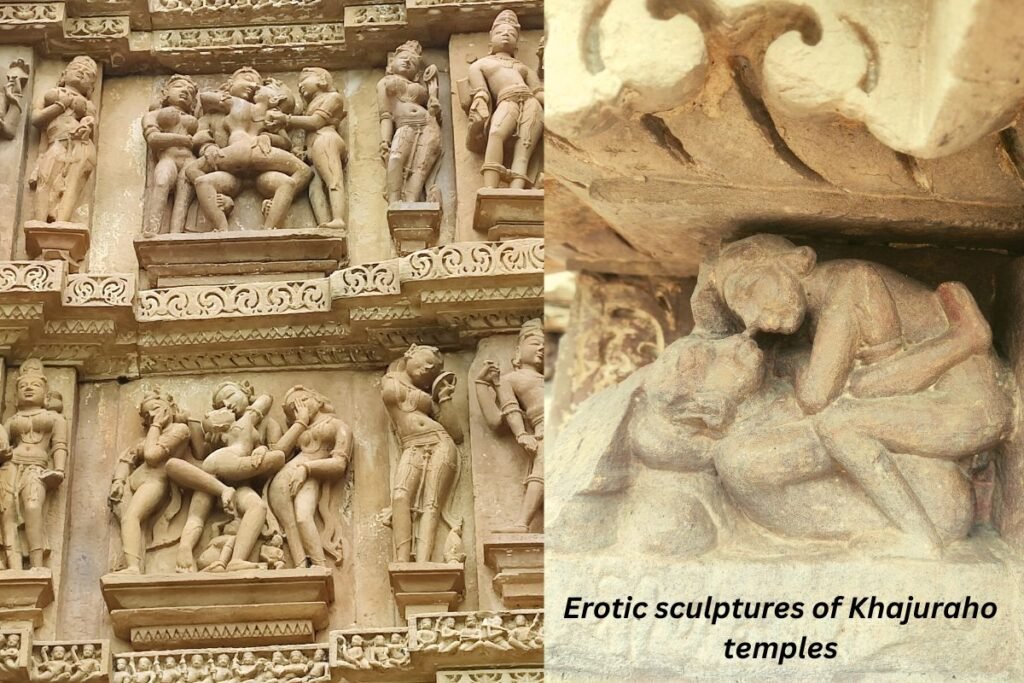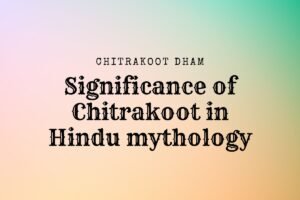Erotic sculptures of Khajuraho: Uncovering the Truth Behind Sensual Sculptures
Khajuraho, a small village in Madhya Pradesh, India, is famous for its incredible temple architecture and intricate sculptures that adorn its walls. But among the carvings, there’s a controversial subject that’s been the talk of the town for ages – the erotic sculptures. In this blog, we will explore the history and story behind these erotic sculptures on the walls of Khajuraho temples, and why they’re so significant to Indian culture.
Also read:
Political and Cultural History of Bundelkhand
Places to see in Khajuraho
खजुराहो में घूमने के लिए 15 सबसे खूबसूरत पर्यटन स्थल

Erotic sculptures of Khajuraho temples
Khajuraho is home to 25 Hindu and Jain temples, built between the 9th and 12th centuries. These temples were dedicated to various gods, including Shiva, Vishnu, and Parsvanath. And while the sculptures depict a range of themes, including Hindu mythology, nature, and daily life, a significant number of them depict naked figures in sensual and erotic poses.
The presence of these sculptures has sparked a lot of debate over the years. Some view them as obscene, while others consider them works of art that celebrate the beauty and sensuality of the human form. So, what’s the story behind these sculptures, and what do they symbolize?
The story behind the erotic sculptures of Khajuraho and its meaning
To understand the story, we need to go back in time and look at the cultural and philosophical context in which these temples were built. In ancient Hindu philosophy, the human body was considered a temple of the soul, and it was believed that venerating and celebrating the body was necessary for spiritual enlightenment. This philosophy is reflected in the sculptures, which depict the naked human form in various poses, celebrating the beauty and power of the body.
The erotic sculptures in Khajuraho are not just depictions of the naked form, but they’re rich in symbolism and convey deeper philosophical concepts. For example, the sculptures depict sexual acts not just as physical acts, but as expressions of love, devotion, and the union of body and soul. In Hindu philosophy, the sexual union was seen as a metaphor for the union of the individual soul with the divine, and these sculptures were thought to symbolize this spiritual concept.
Another significant aspect of the erotic sculptures is the depiction of the naked female form. In Hinduism, the female form was revered and celebrated as a symbol of power and strength. The naked female sculptures in Khajuraho depict women in sensual poses, celebrating their beauty and sensuality. The depiction of women in these sculptures was seen as a celebration of female power and energy and as a symbol of balance and harmony between male and female energy.
Apart from their cultural and philosophical significance, the erotic sculptures in Khajuraho also have historical importance. The temples were built during a time of great cultural and artistic flourishing in India, and the sculptures are a testament to the creativity and artistic expression of that era. The sculptures are an important part of India’s cultural heritage and offer a glimpse into the beliefs and values of the people who created them.
Controversies around erotic sculptures of Khajuraho
Despite their significance, the erotic sculptures in Khajuraho have been the subject of controversy, with some calling for censorship or covering them up. Some believe that they’re disrespectful to Indian culture and values. But it’s important to remember that the erotic sculptures in Khajuraho were created in a different time and context and that they symbolize a rich cultural and philosophical heritage that is still relevant today.
In conclusion, the erotic sculptures of Khajuraho temples hold great cultural, philosophical, and historical significance. They are a testament to the creativity and artistic expression of ancient India and symbolize the rich cultural and philosophical heritage of the country. And while they may be controversial, it’s essential to preserve and understand them, so that future generations can appreciate and learn from them.
Anecdotes related origin of Erotic sculptures of Khajuraho temples
There are many stories behind these Erotic sculptures of Khajuraho, one of which goes like this.
According to legend, the moon himself tried to seduce a lovely woman named Hemavathy as she was taking a moonlight bath. She sought sanctuary in the forests and nurtured her son Chandravarman by herself. But the moon assured her that one day their son will rule an empire. Chandravarman lived up to his promise and grew up to start the Chandela dynasty. He is thought to have been influenced by his mother’s tale since he constructed temples with sculptures showing human passions—and perhaps the futility of those same urges.




